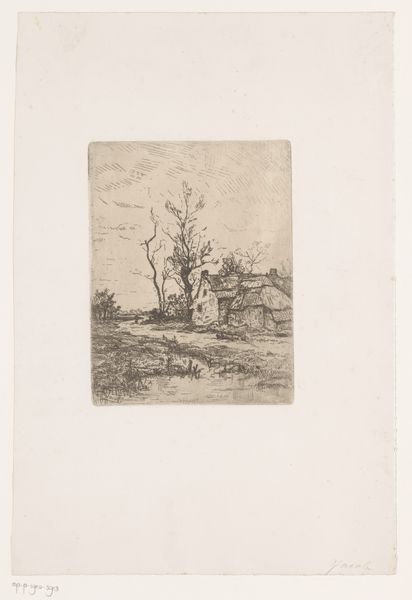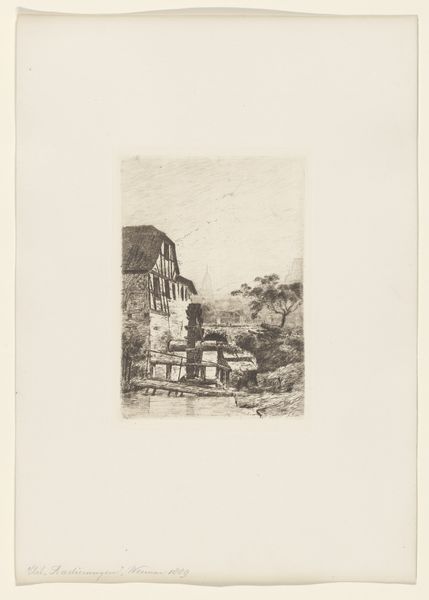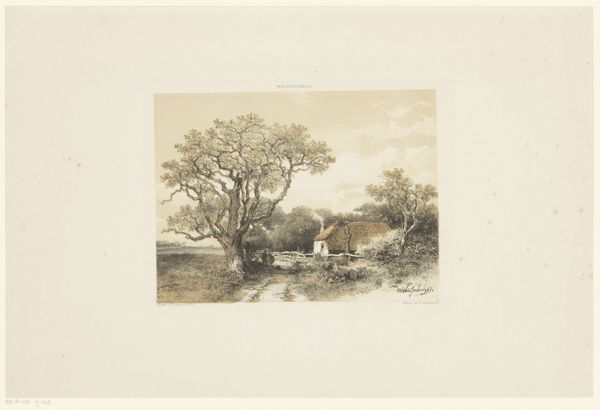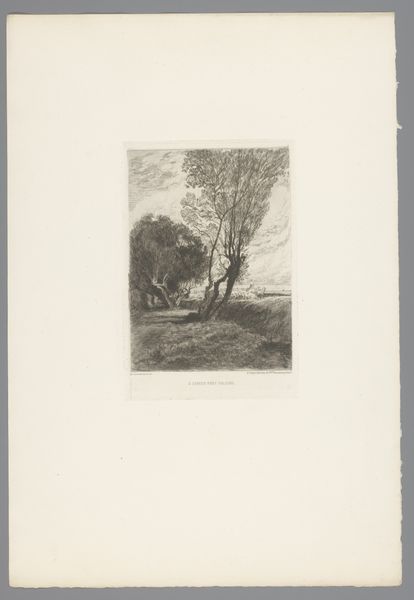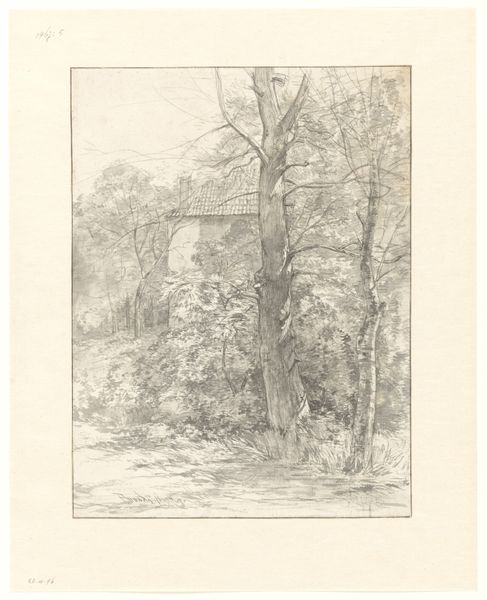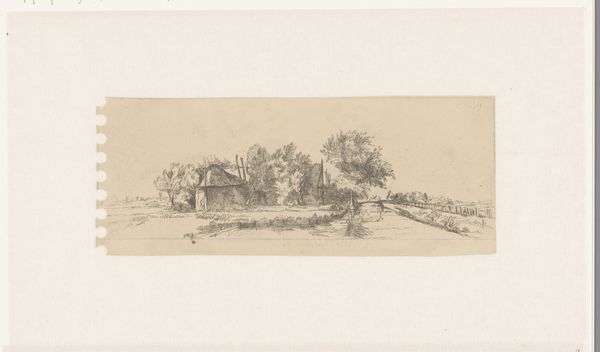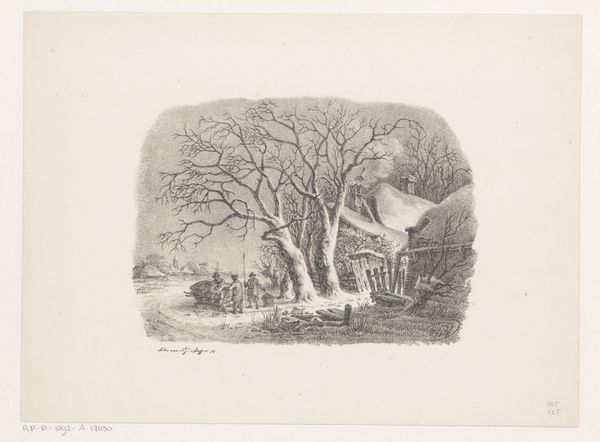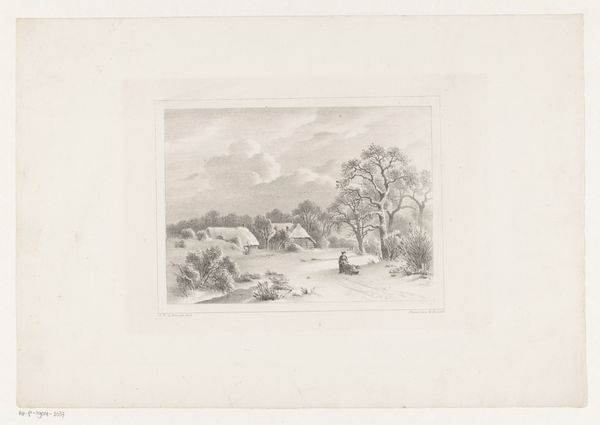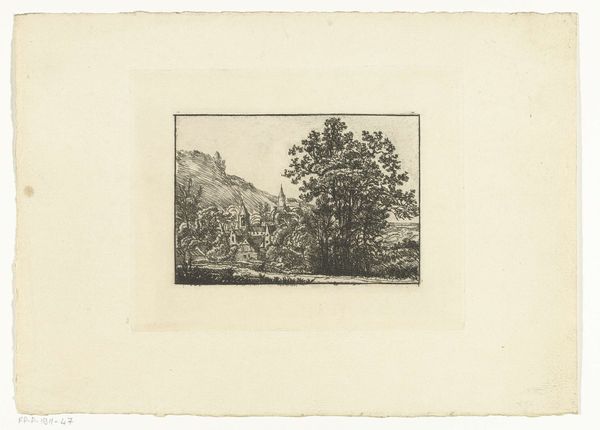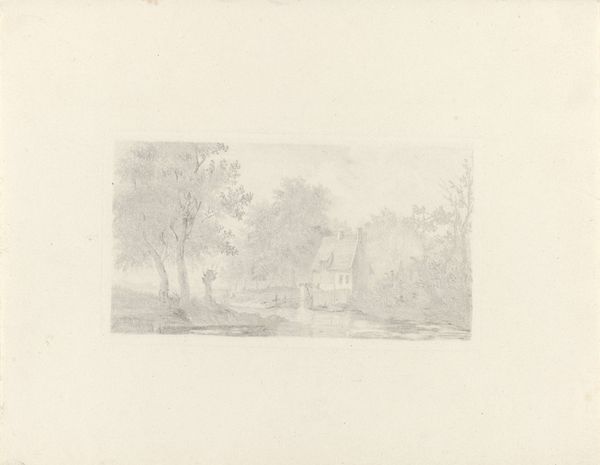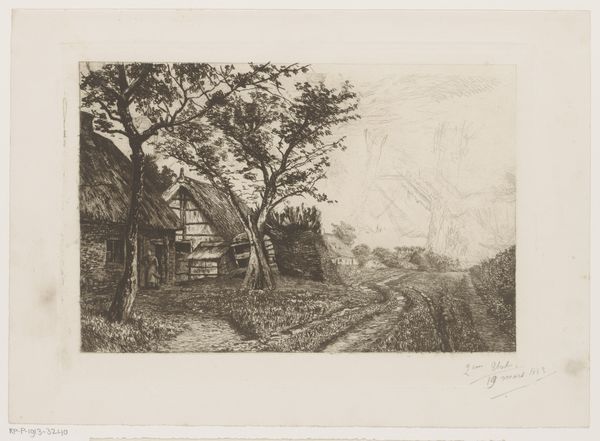
drawing, print, etching, paper
#
drawing
# print
#
impressionism
#
etching
#
landscape
#
paper
#
cityscape
Dimensions: 160 × 245 mm (image/plate); 400 × 335 mm (sheet)
Copyright: Public Domain
Editor: This is Camille Pissarro's "View of Pontoise," created in 1885. It's an etching, so a print on paper. It feels almost dreamlike to me; the lines are soft, and the whole scene blends together. What strikes you when you look at it? Curator: Immediately, the composition commands attention. Pissarro meticulously balances the organic and geometric forms, initiating a dynamic interplay. Note the contrast between the foreground tree's curvilinear branches and the background's rectilinear buildings. Does that structural opposition evoke tension or harmony? Editor: I hadn't thought about that! I was more drawn to the atmospheric perspective and how the details fade into the distance, especially the smoke stacks, adding some sort of visual tension to the landscape. Curator: Precisely! Let us deconstruct that. Consider how the use of line weights affects spatial recession and depth. The sharp, decisive strokes in the tree’s architecture juxtaposed against the indistinct horizon craft a tangible sense of atmospheric diminution, no? Editor: So, you're suggesting the success of this work depends less on what's depicted and more on how it's depicted, focusing on form rather than content? Curator: Indeed. Disregarding representational accuracy allows us to delve into its formal complexities and artistic processes that make the artwork successful or unsuccessful. Note how the network of thin lines coalesce and fracture as your gaze shifts. What happens with these compositional choices? Editor: That's helpful. I see how the composition creates that visual texture. The strategic placement of elements certainly contributes to the work's overall atmospheric effect, moving away from the documentary reality to the artistic interpretation. Curator: Precisely. It prompts us to appreciate how Pissarro transforms the raw materiality of his environment into an orchestration of formal arrangements, stimulating discourse concerning the rudimentary properties of aesthetics themselves.
Comments
No comments
Be the first to comment and join the conversation on the ultimate creative platform.
